HER FORMATION
February 21st—April 11th, 2025
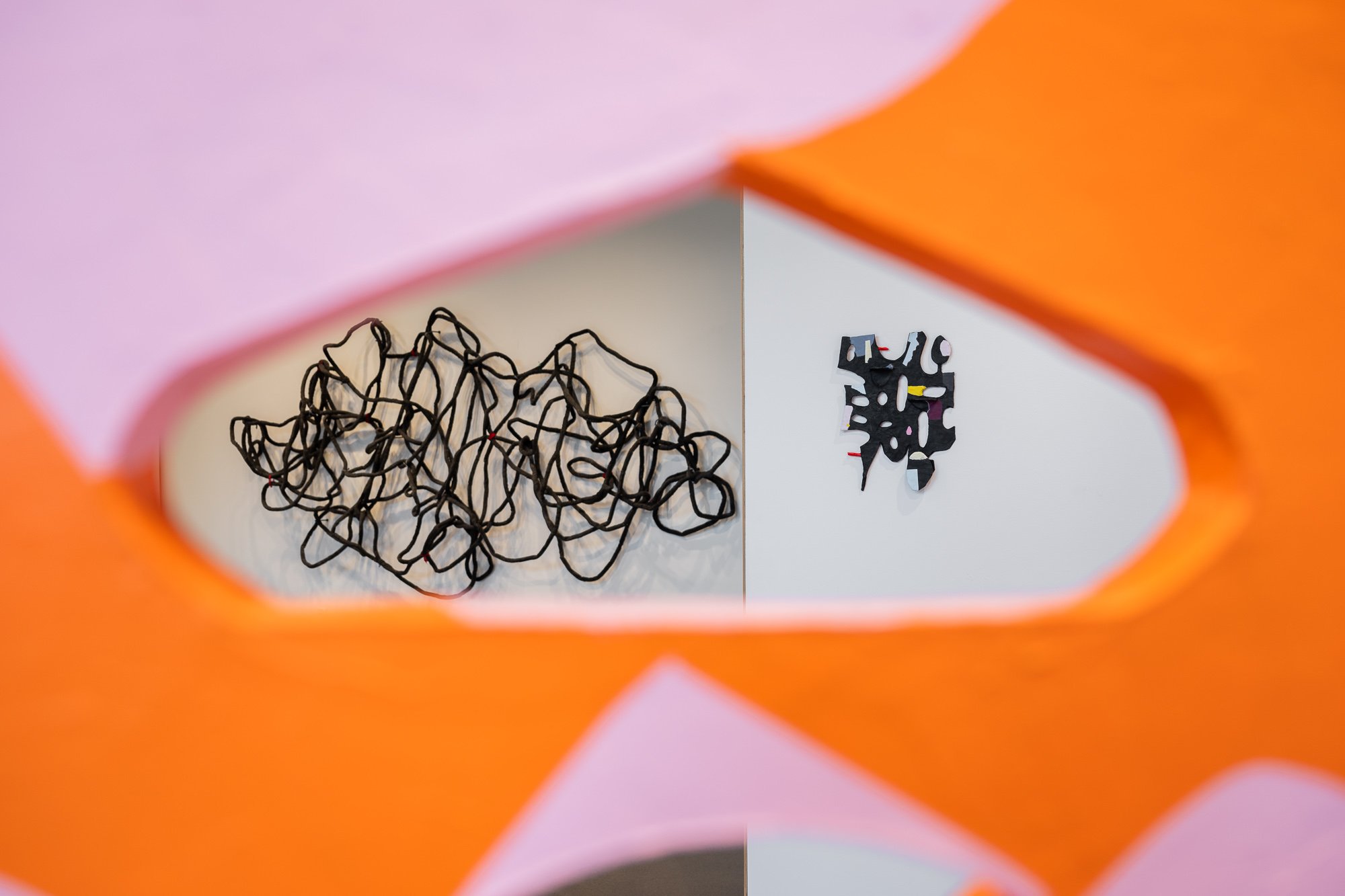



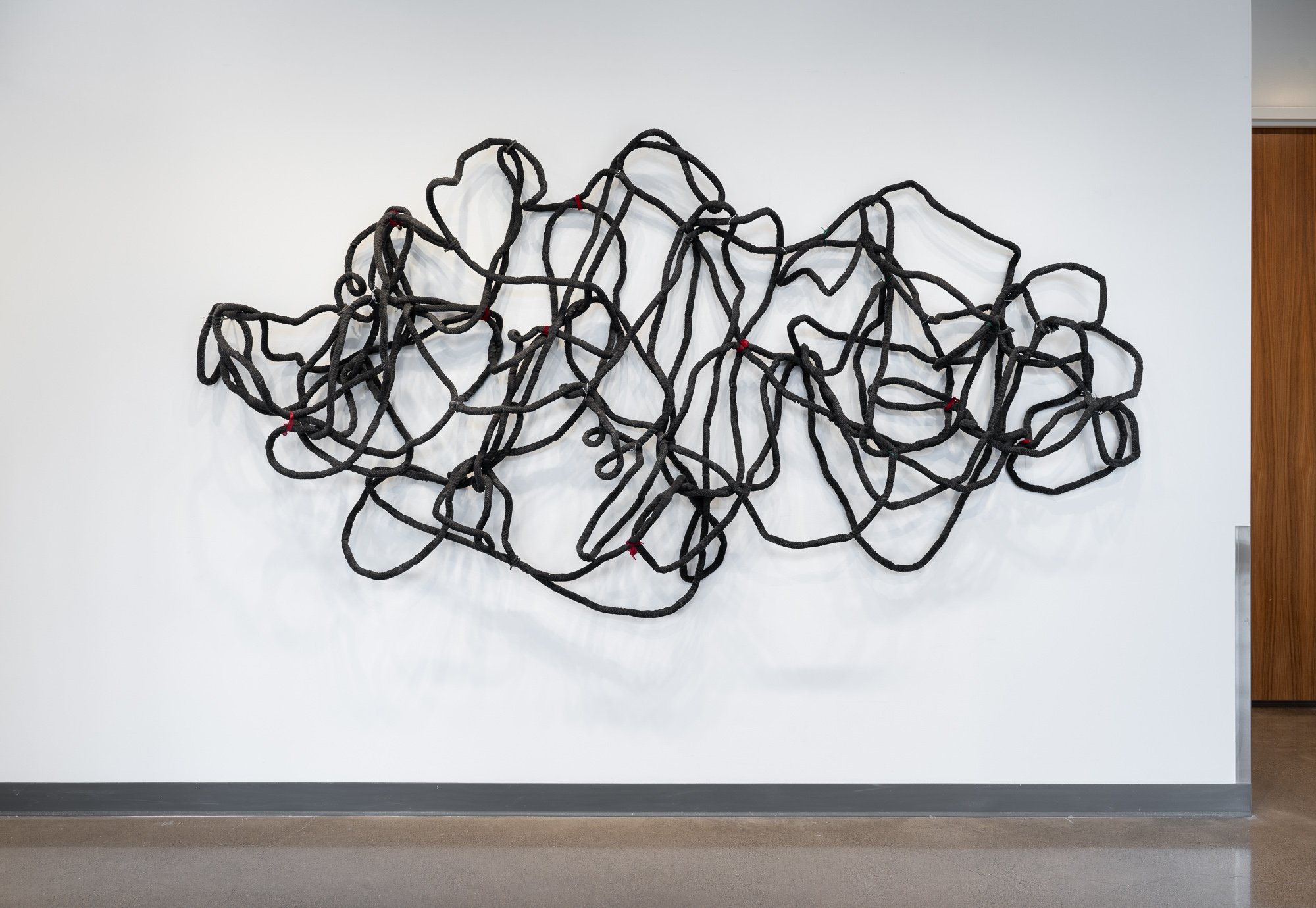
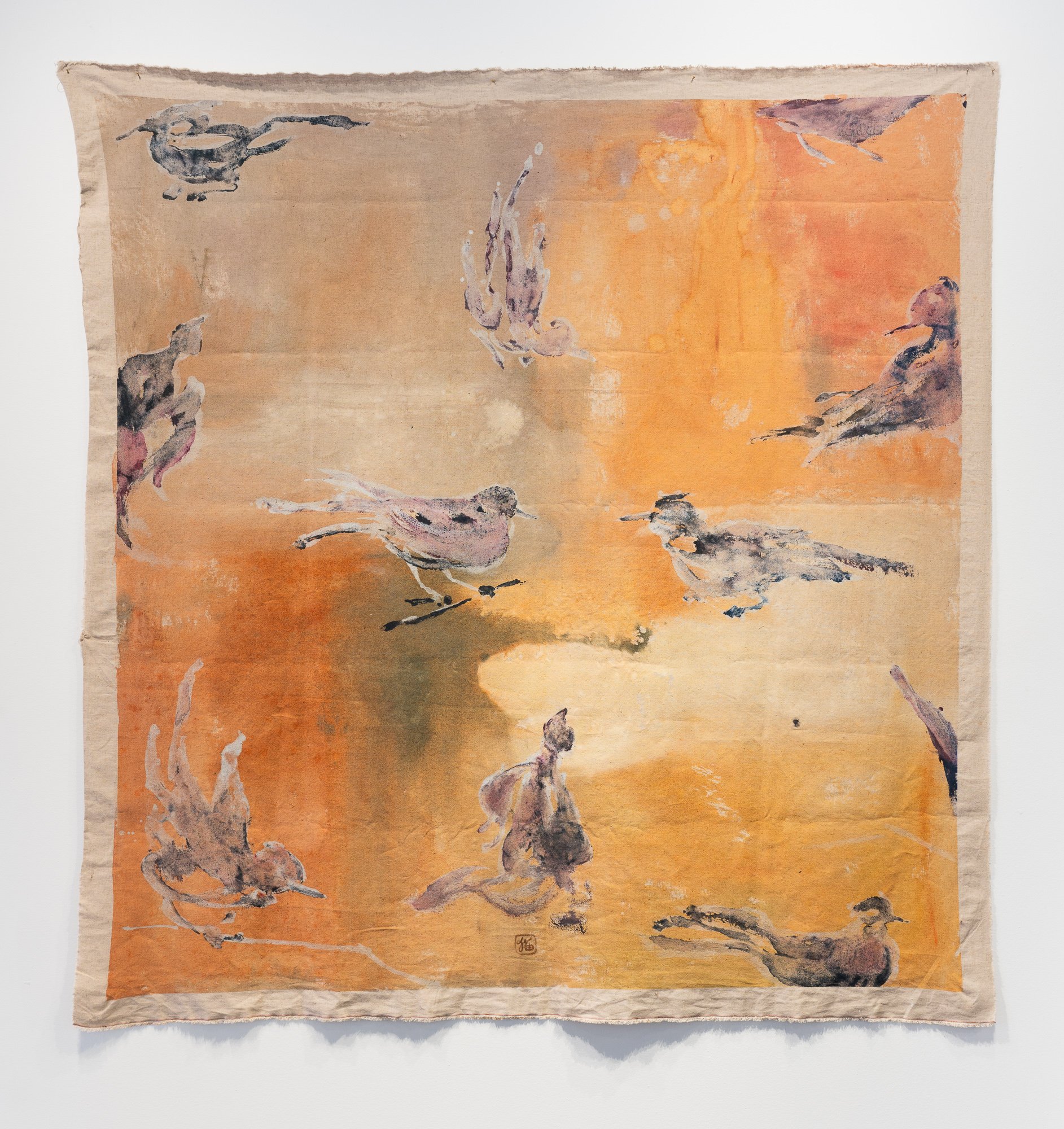
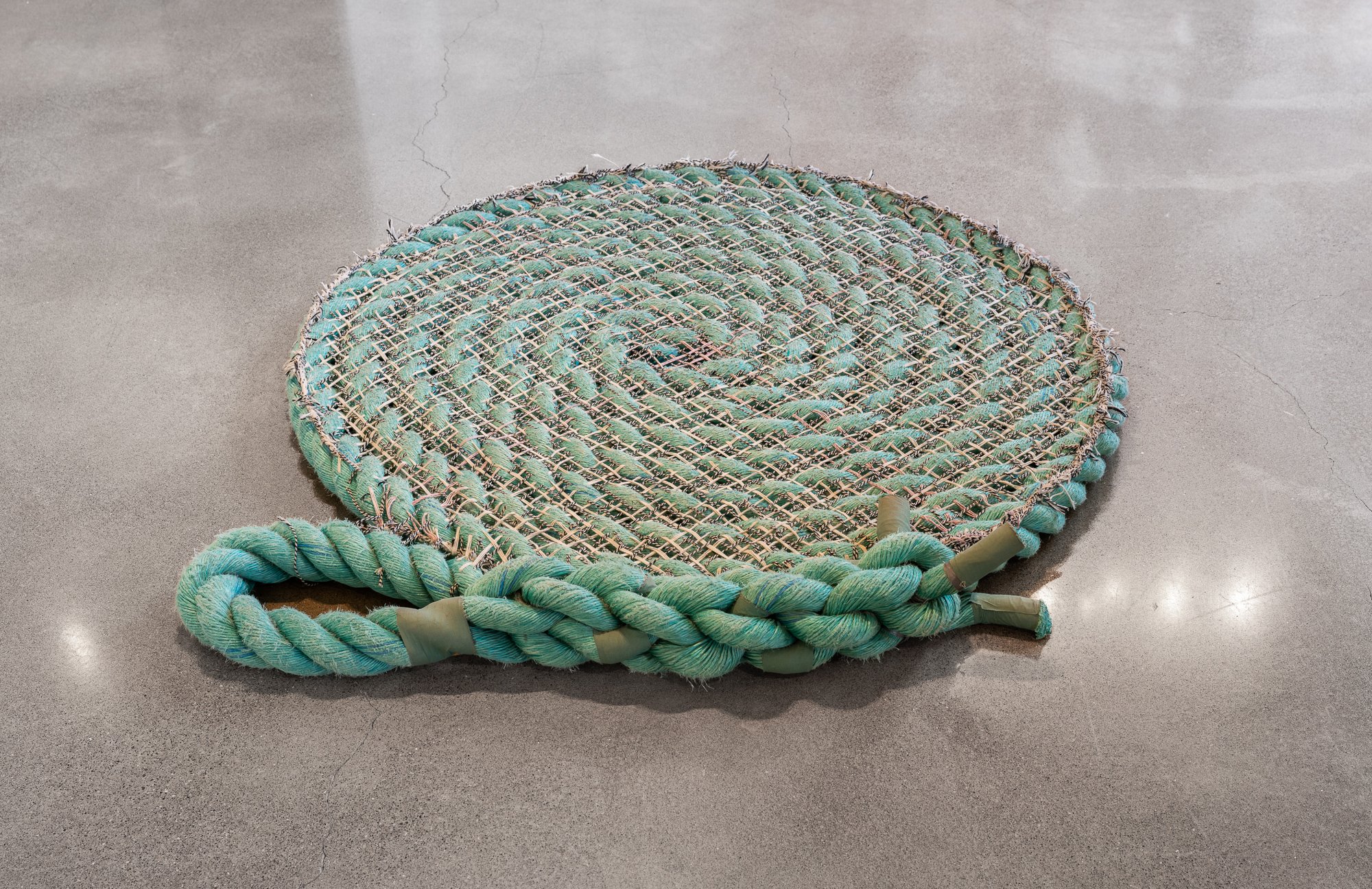
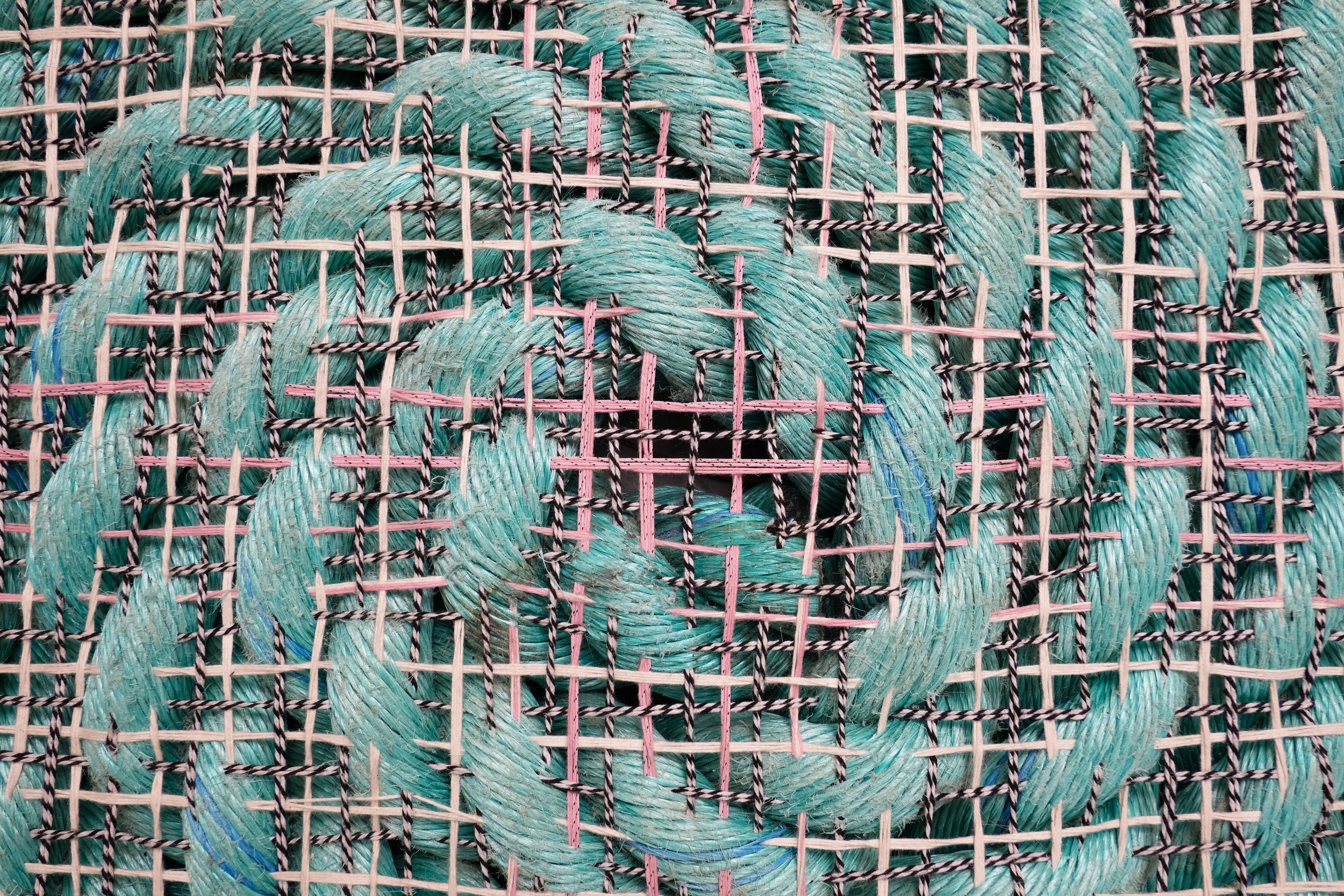

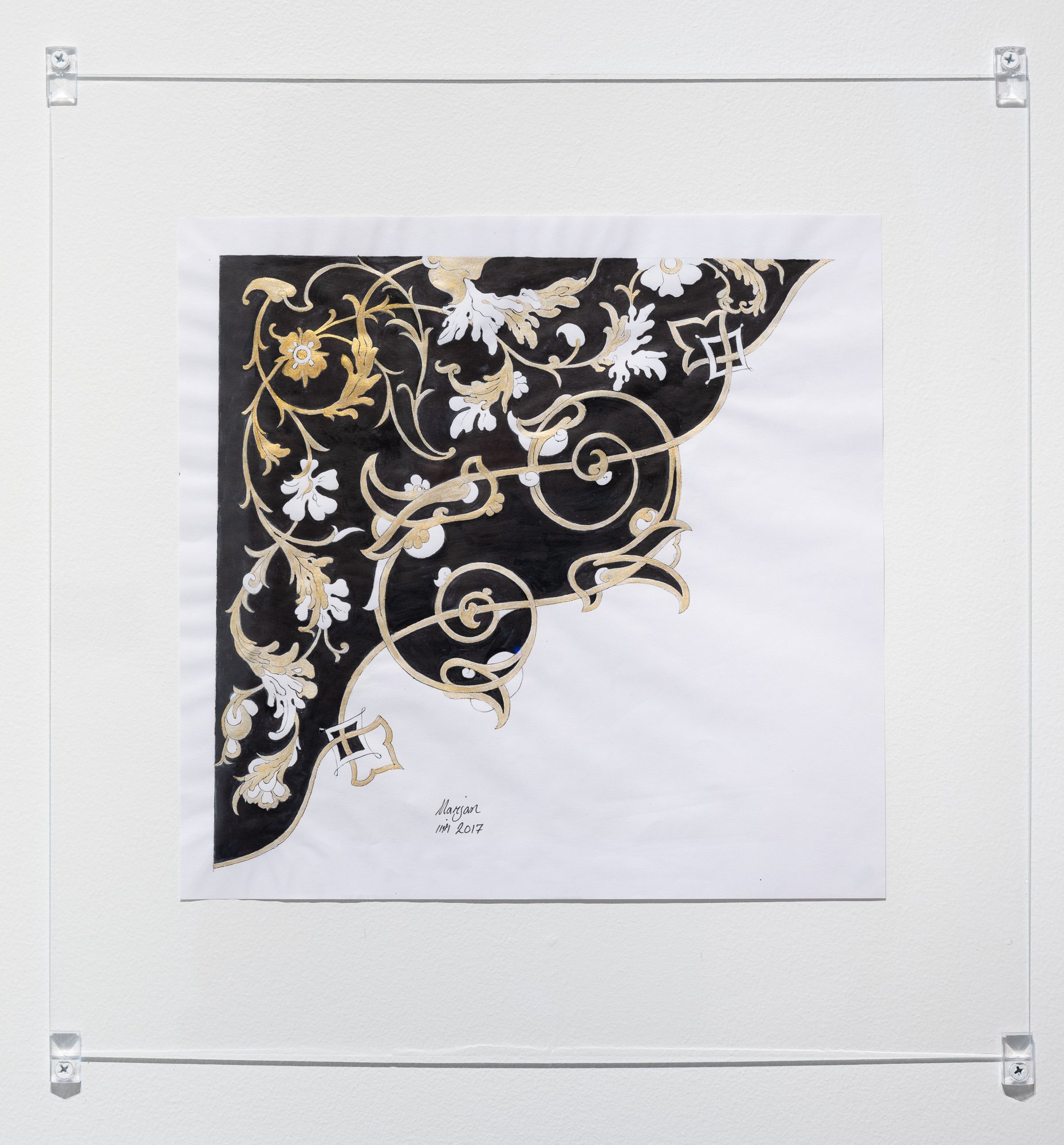

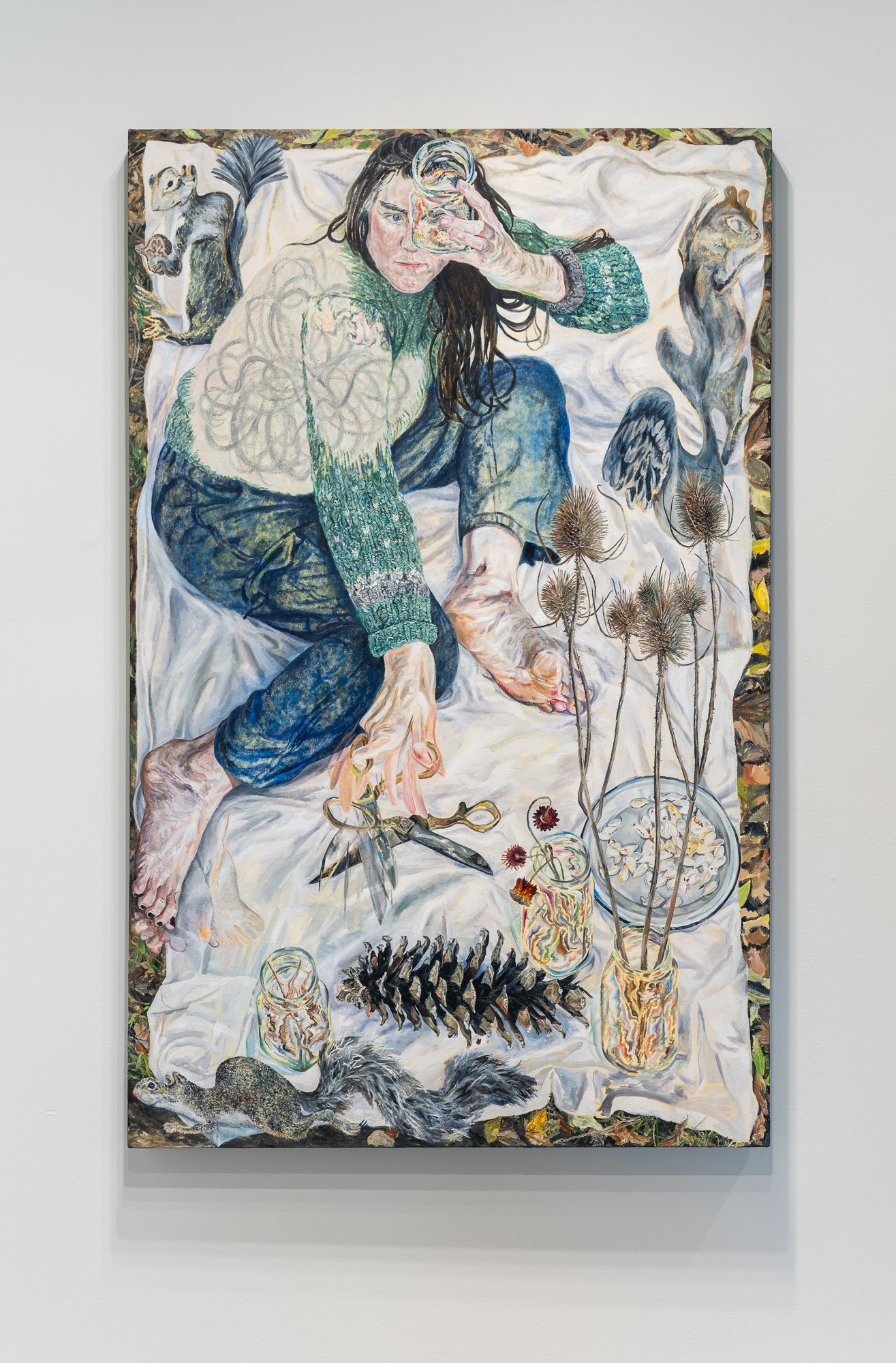

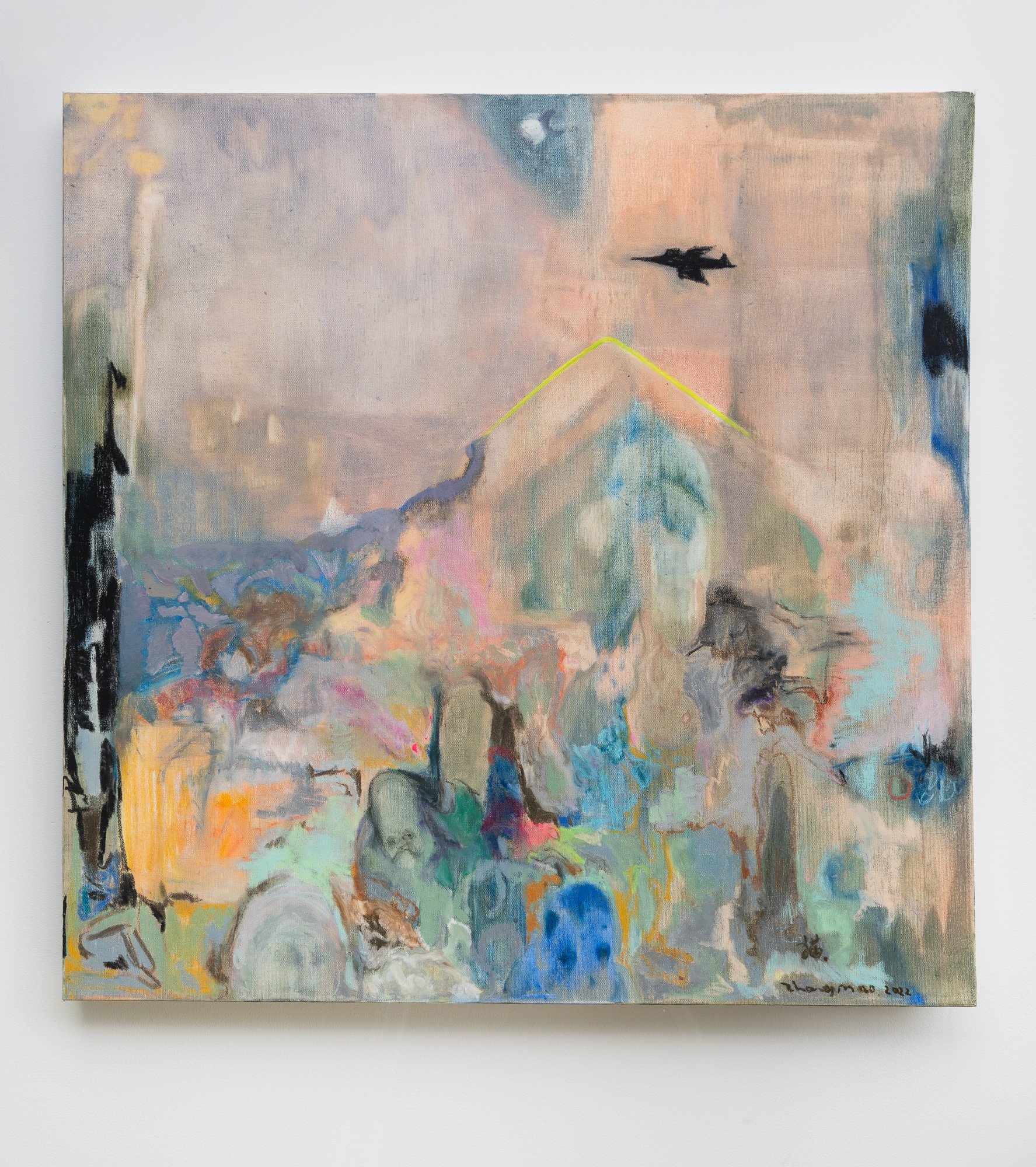
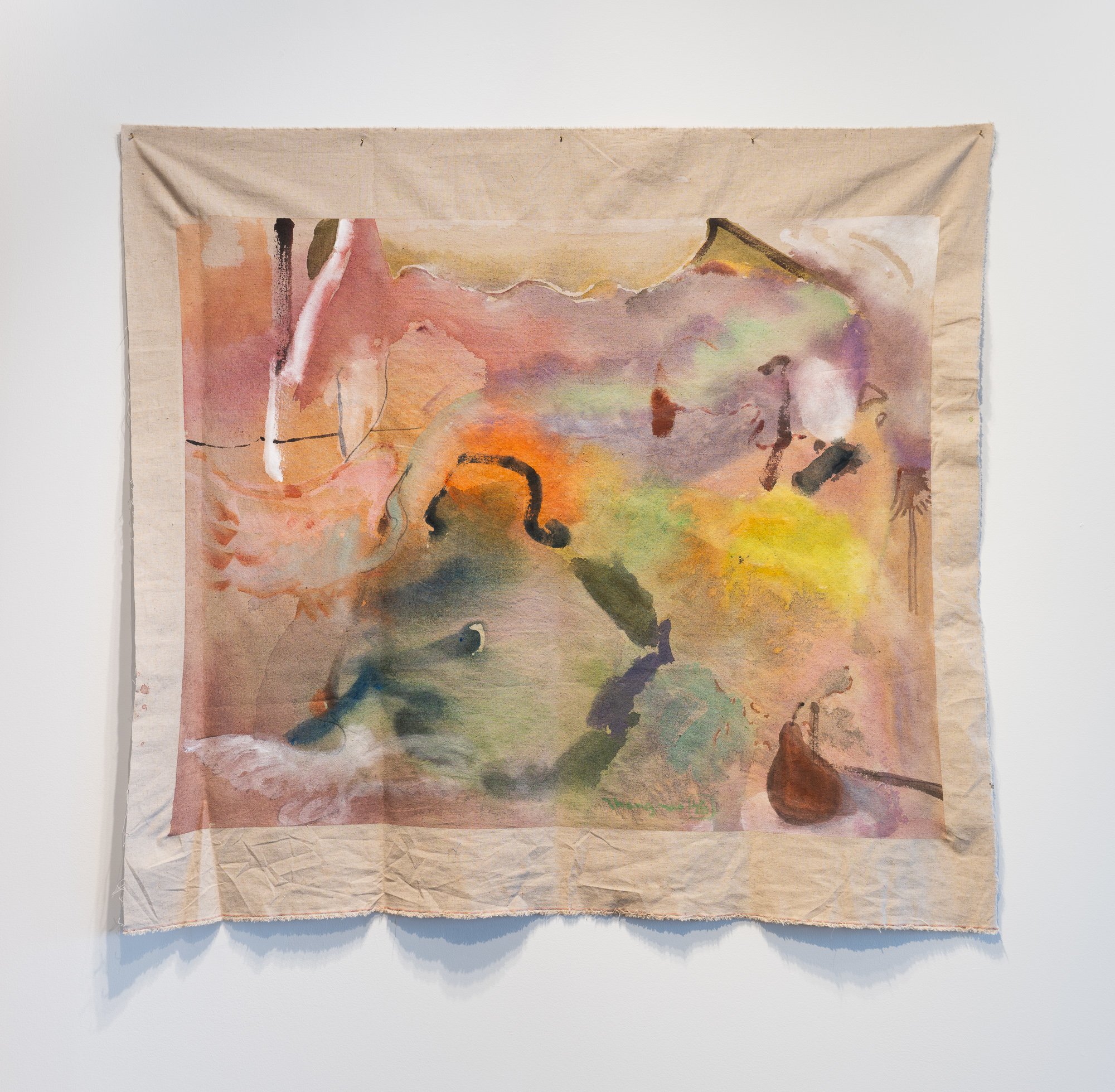

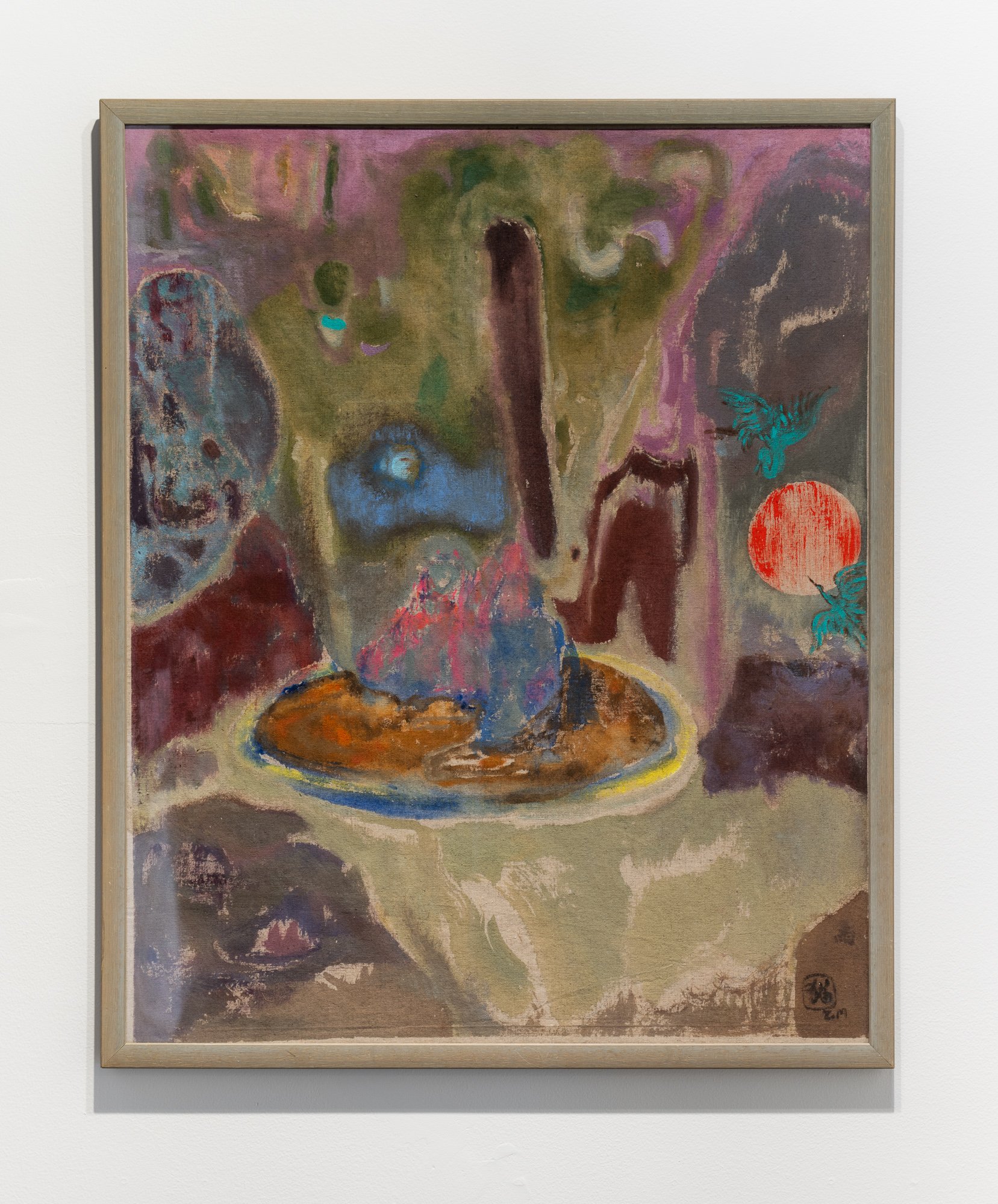
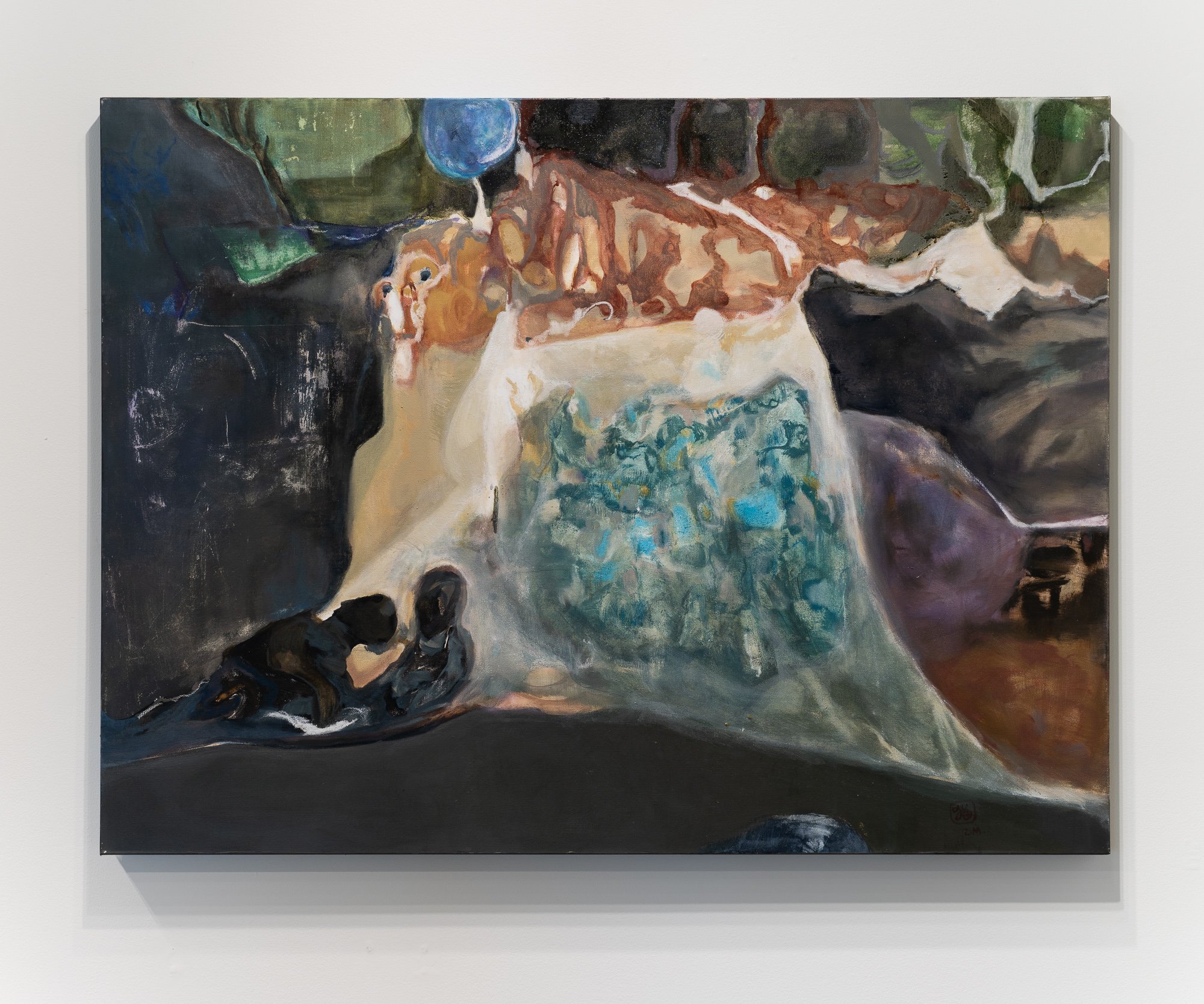
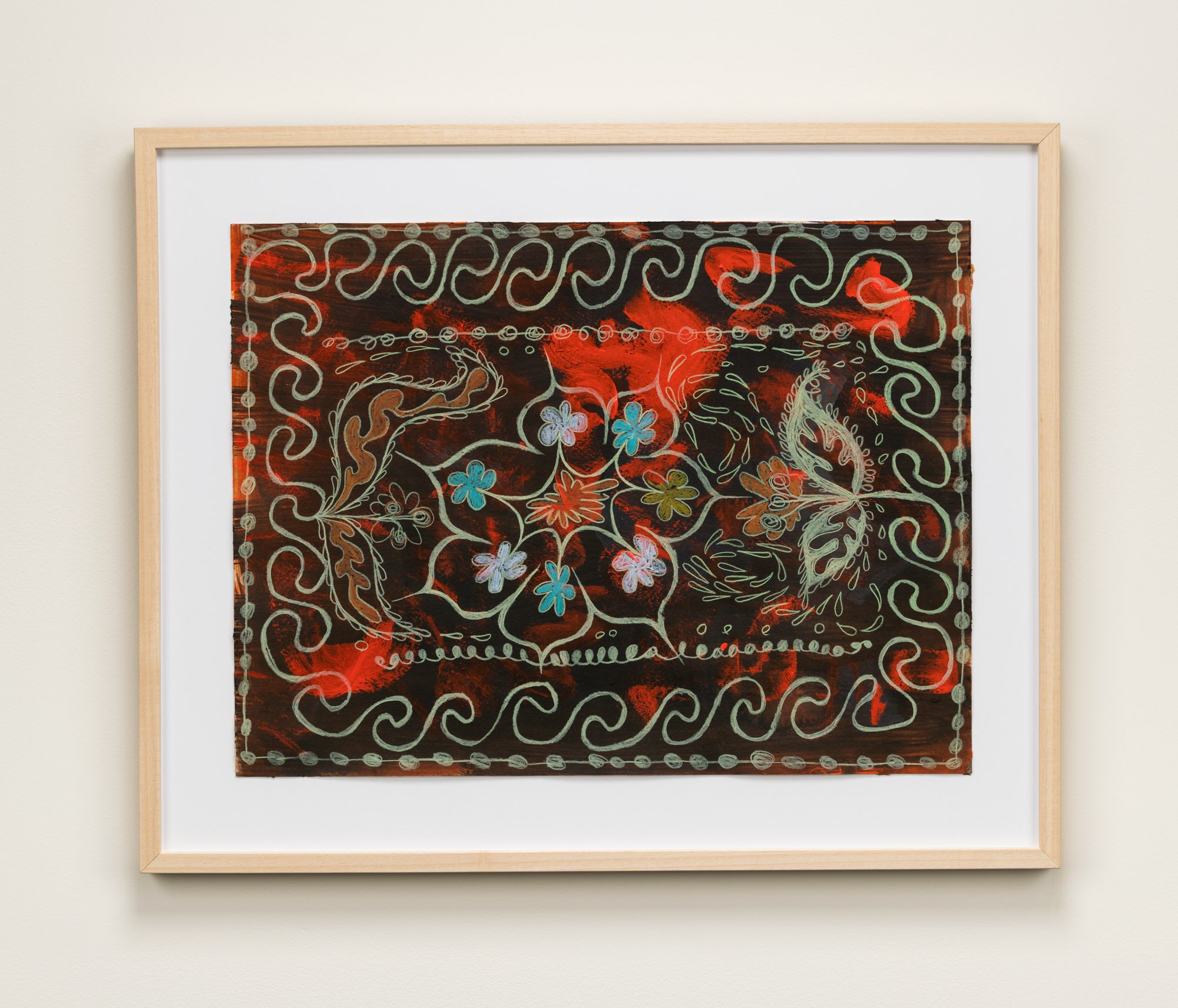

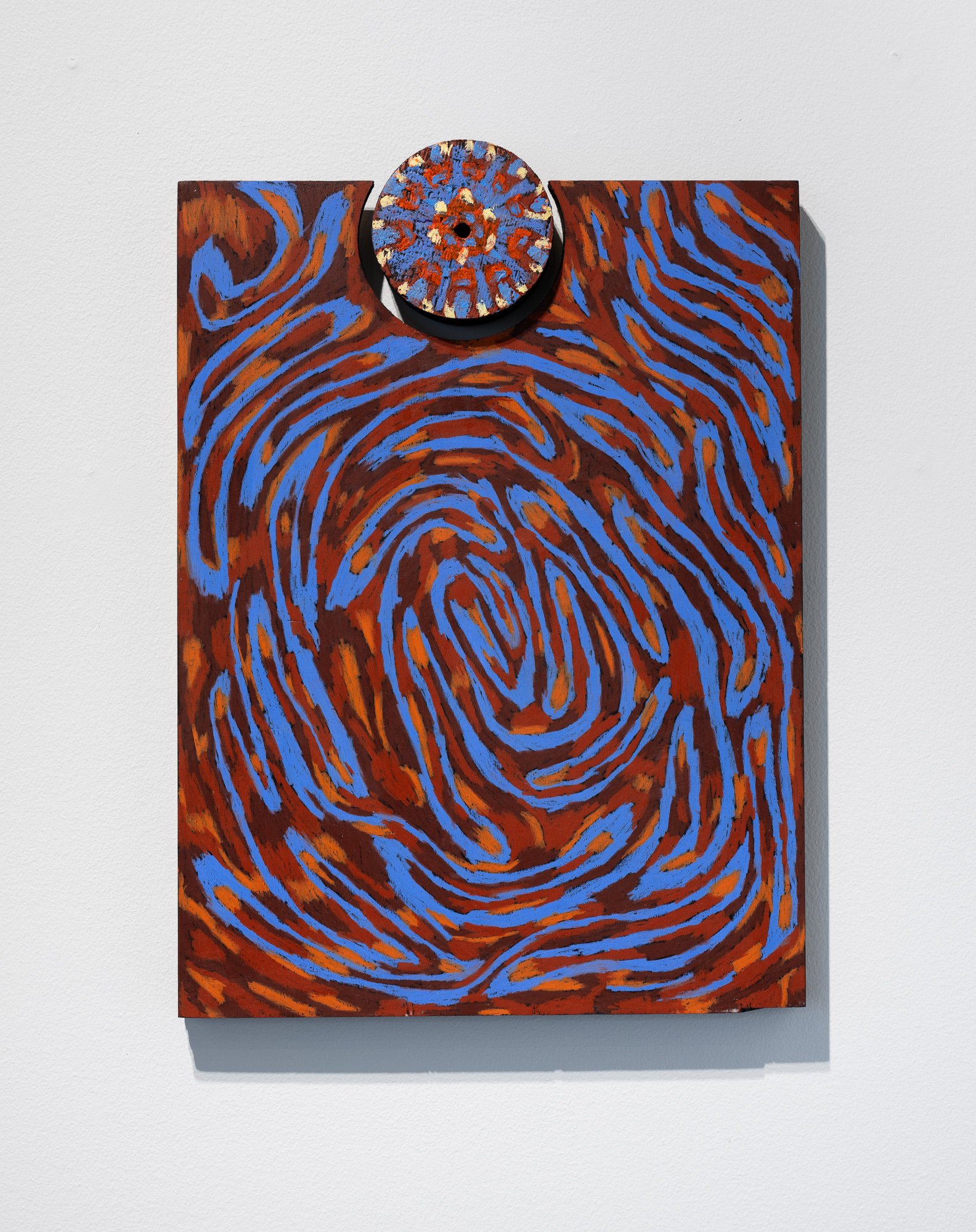
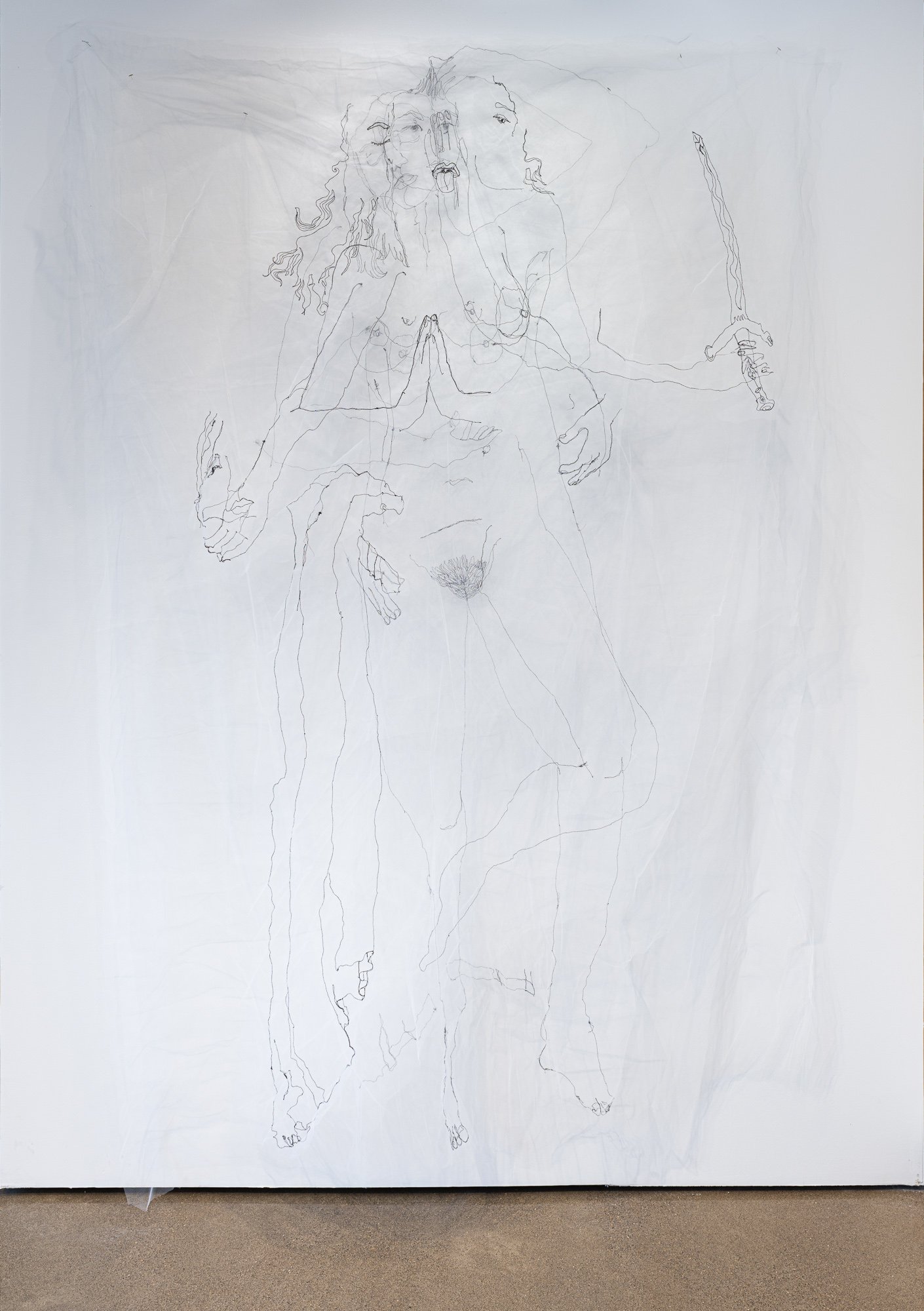
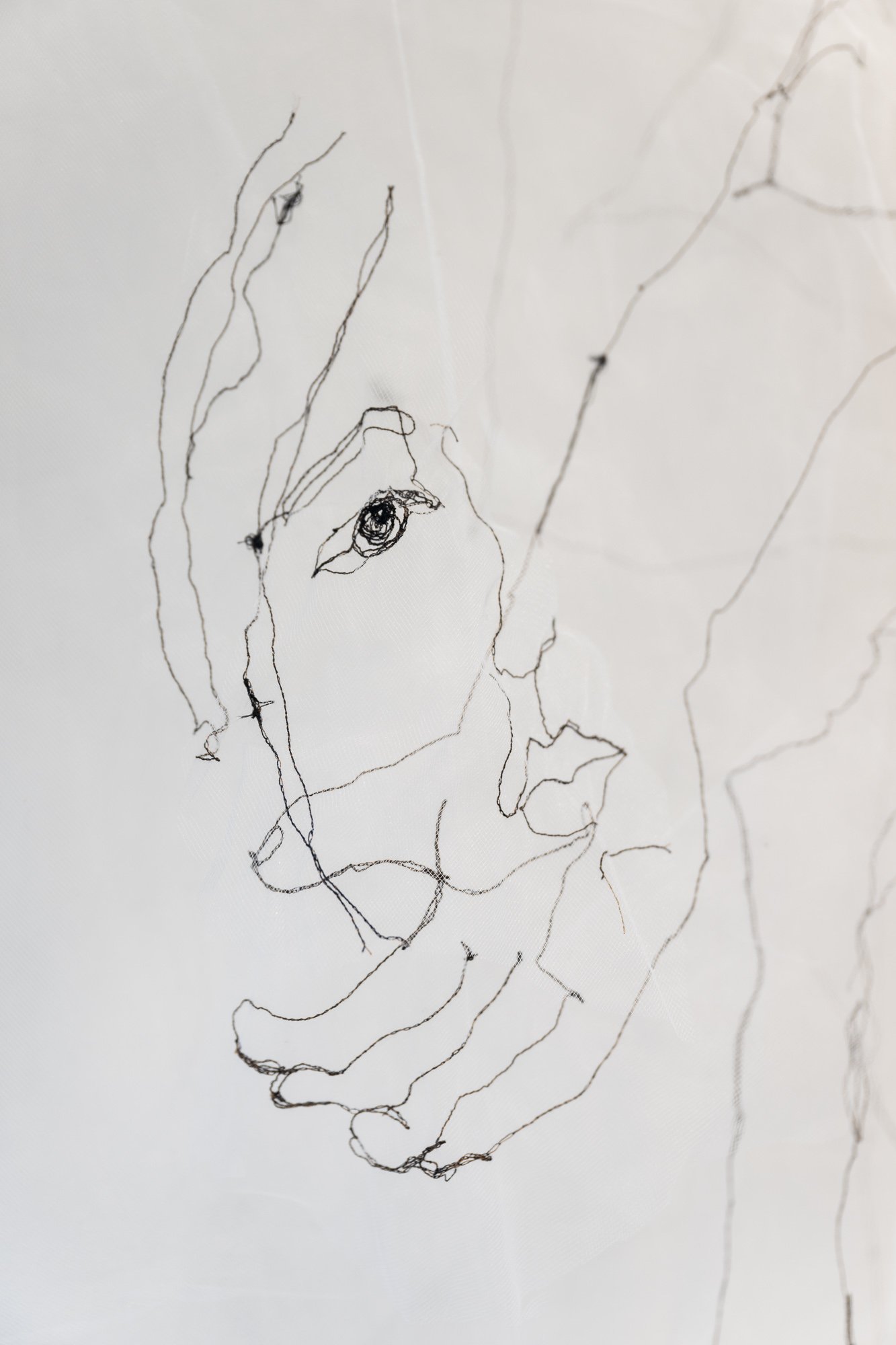
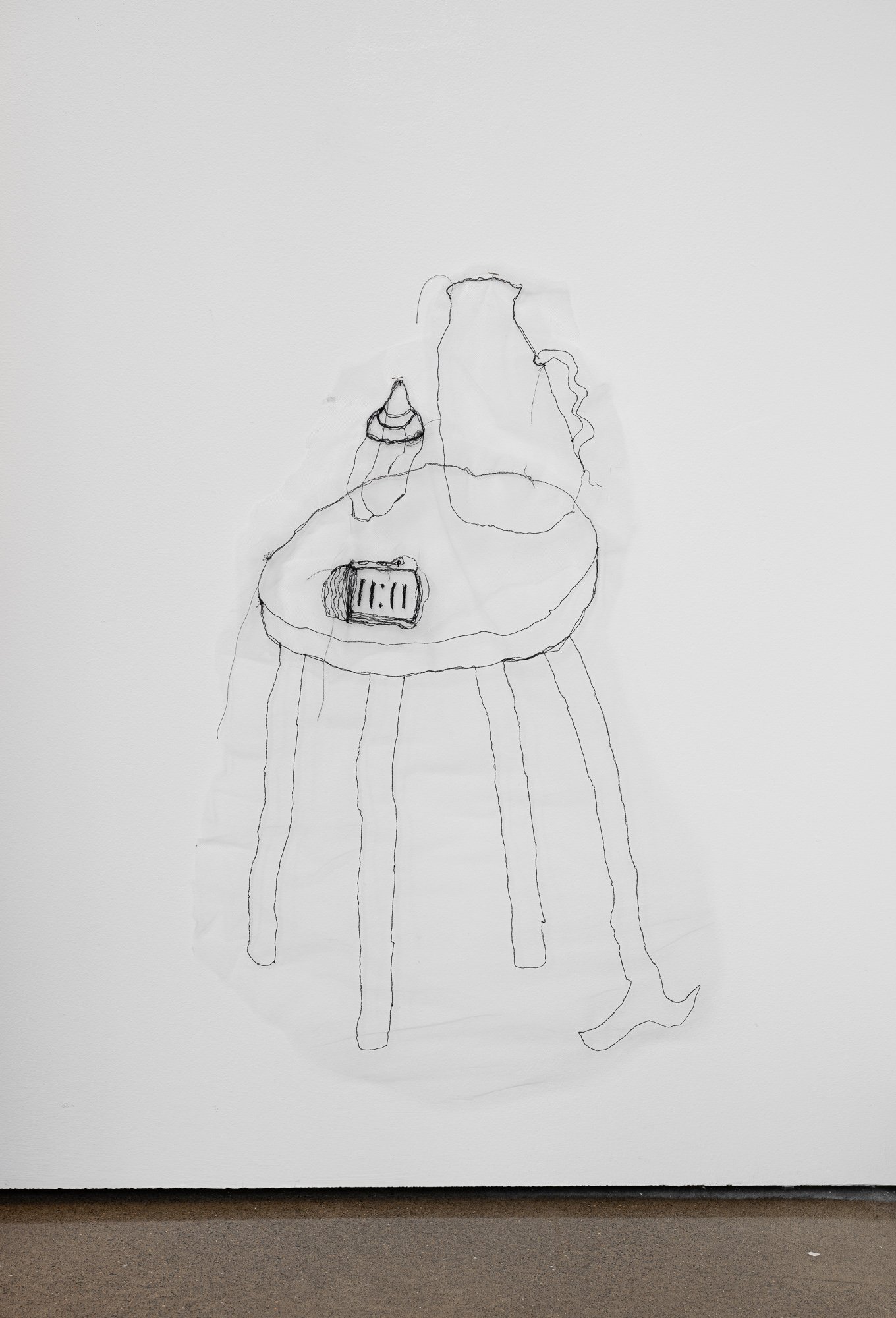
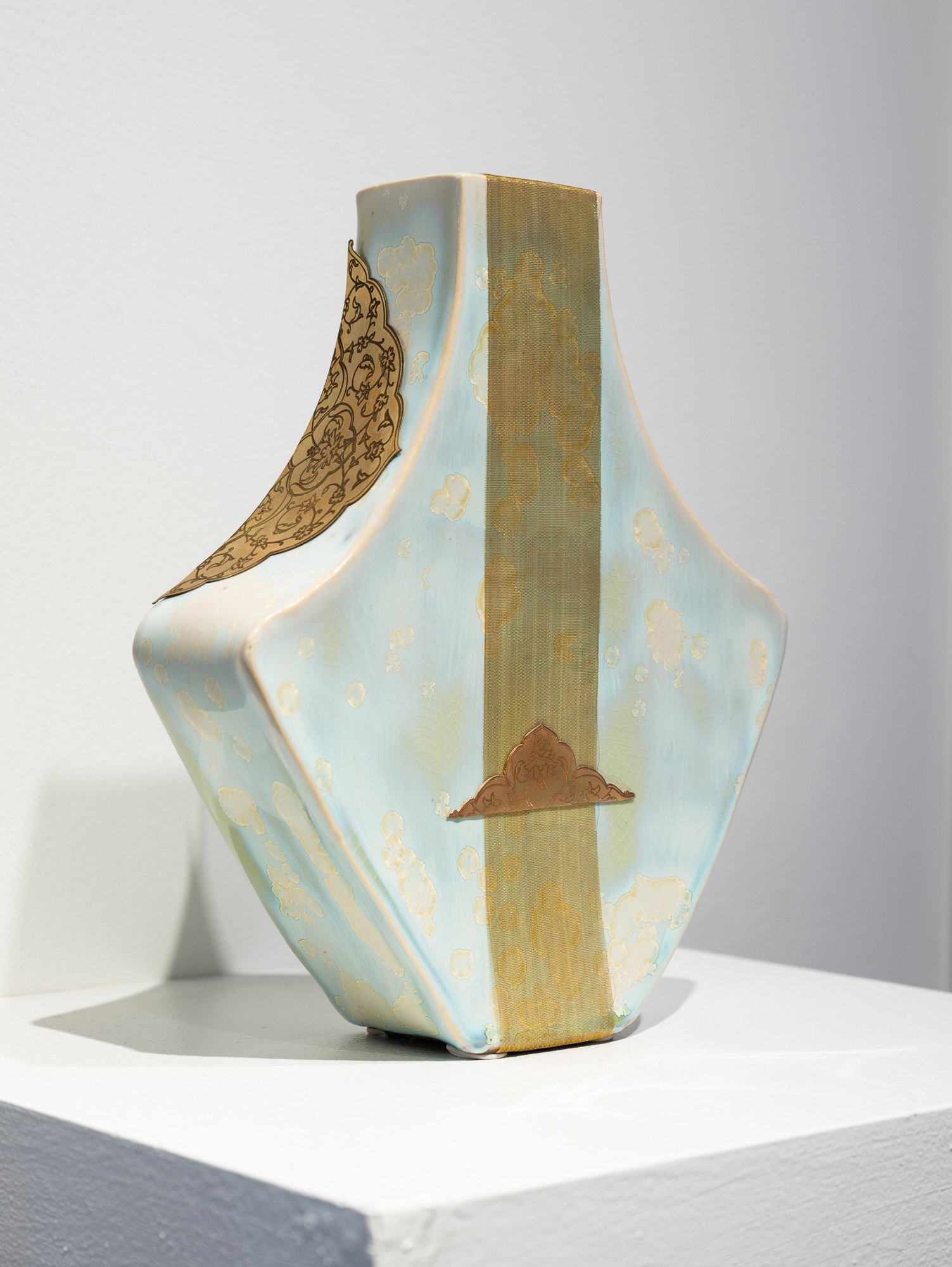
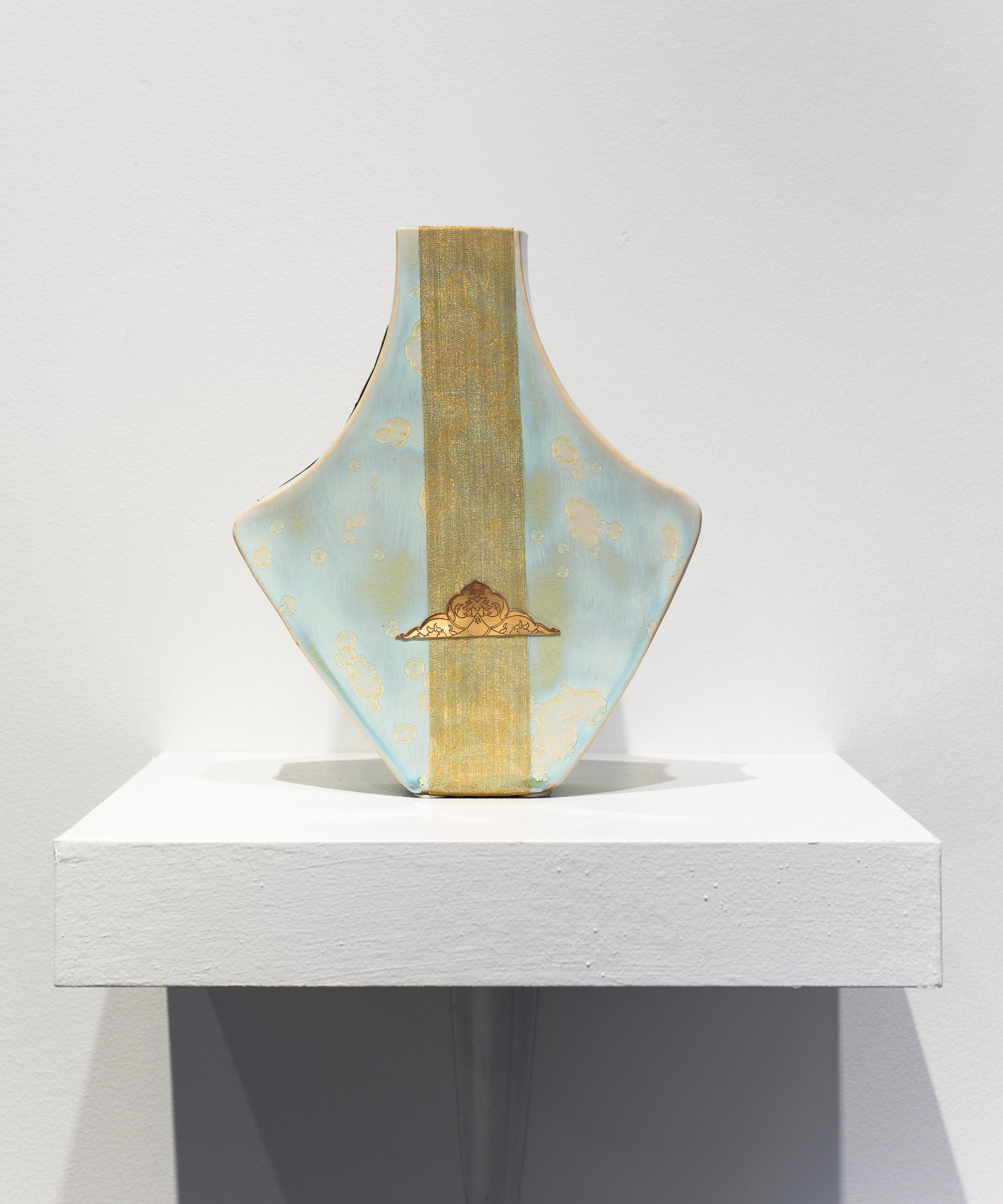
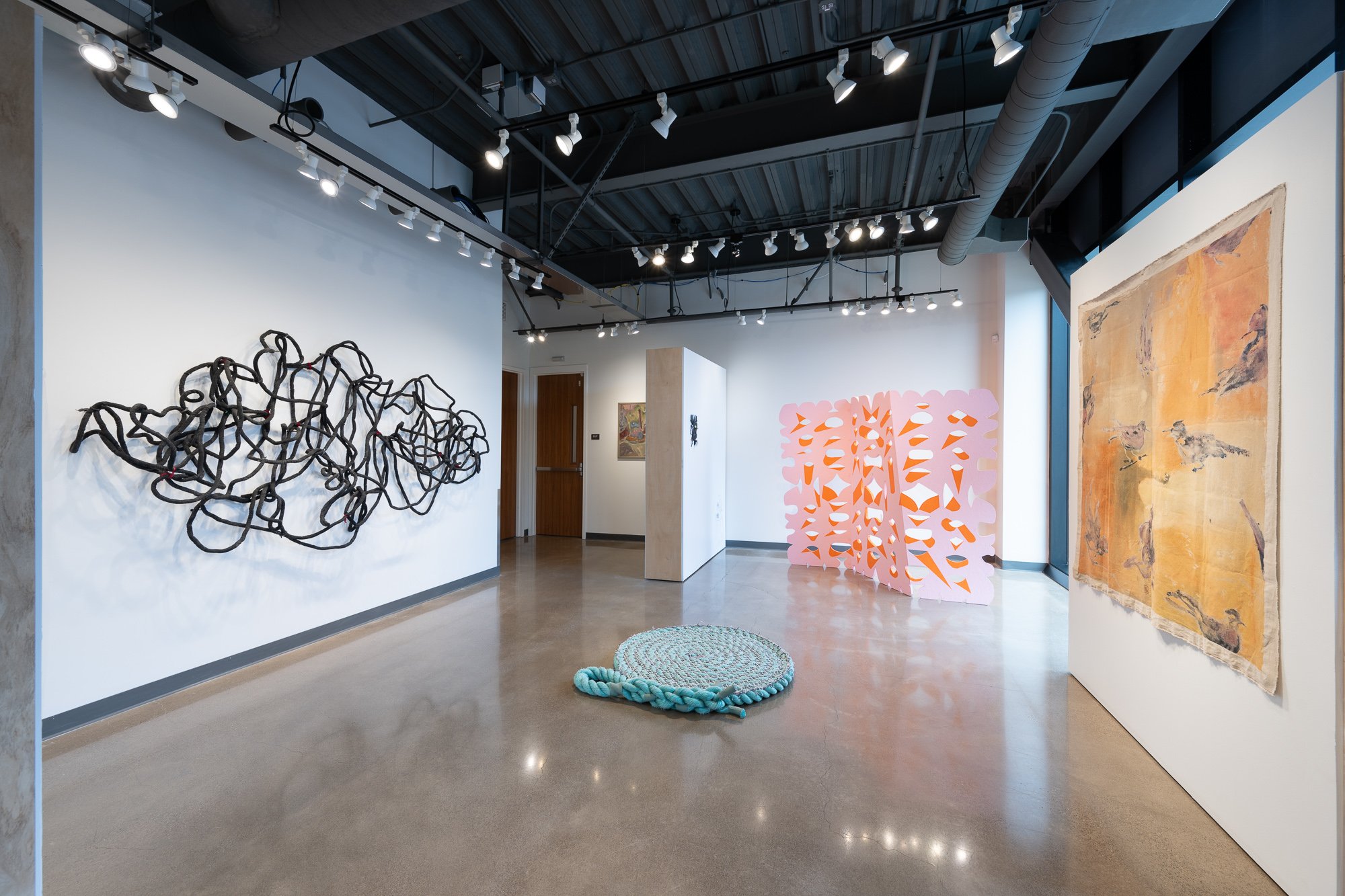


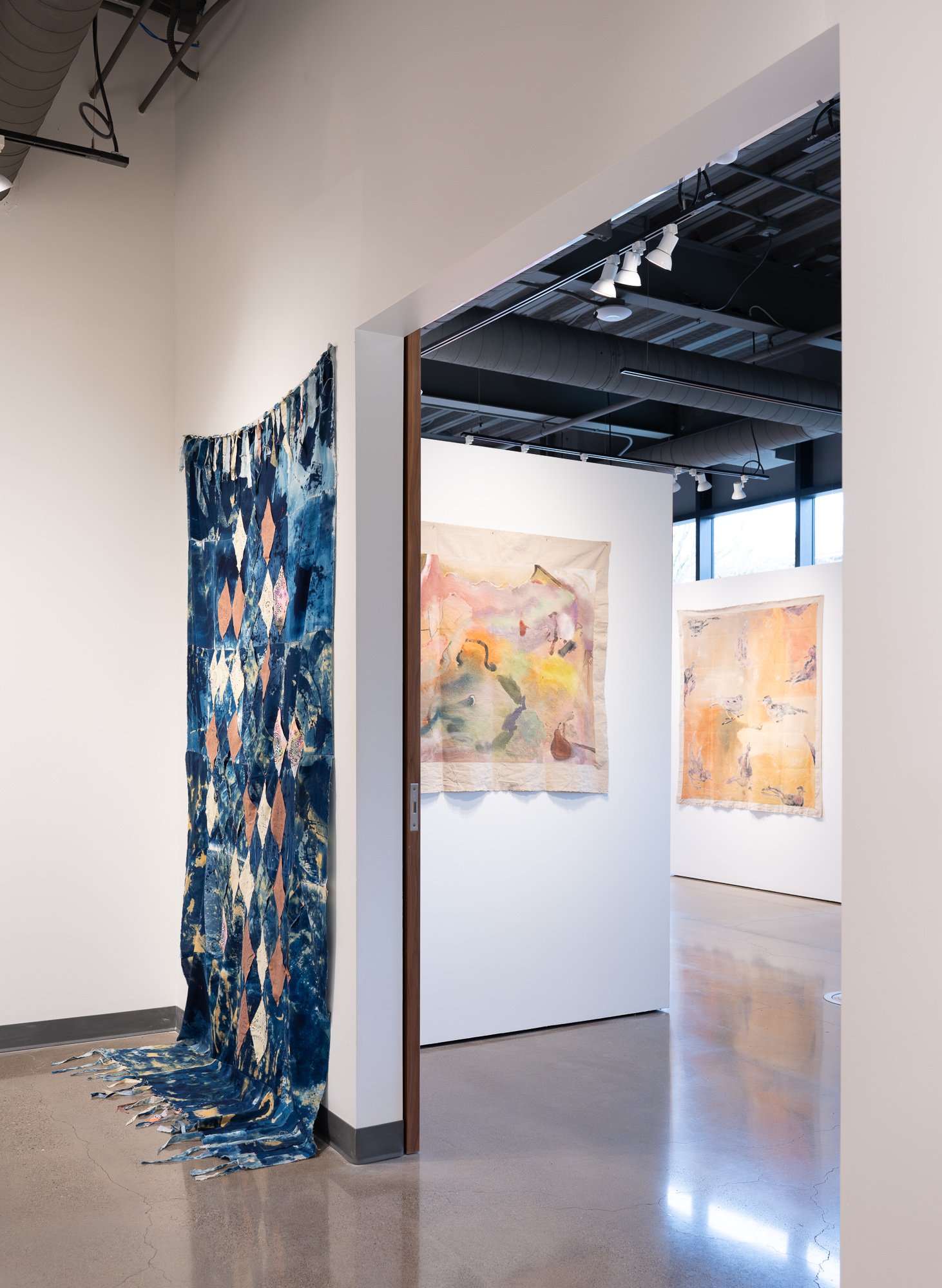
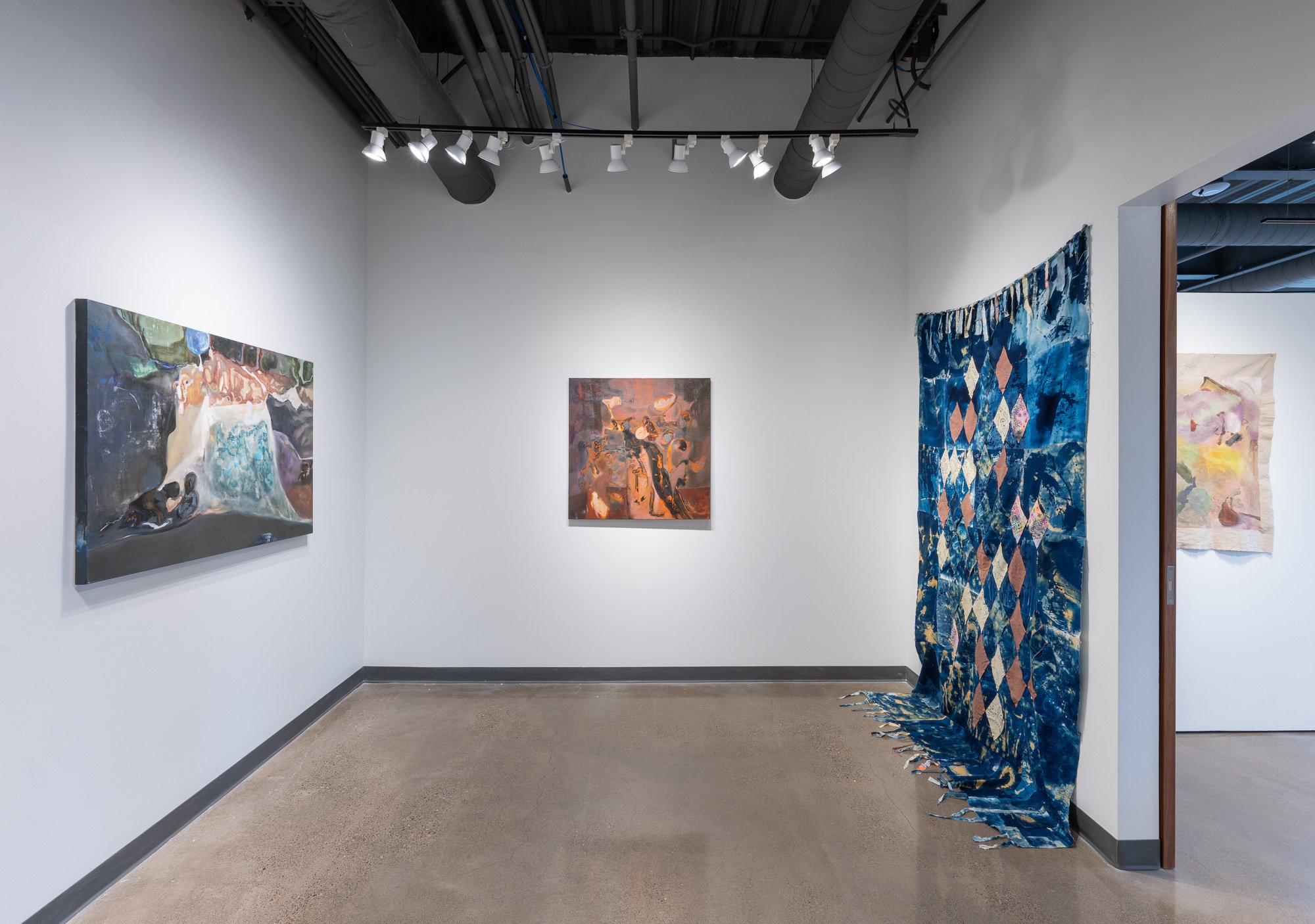
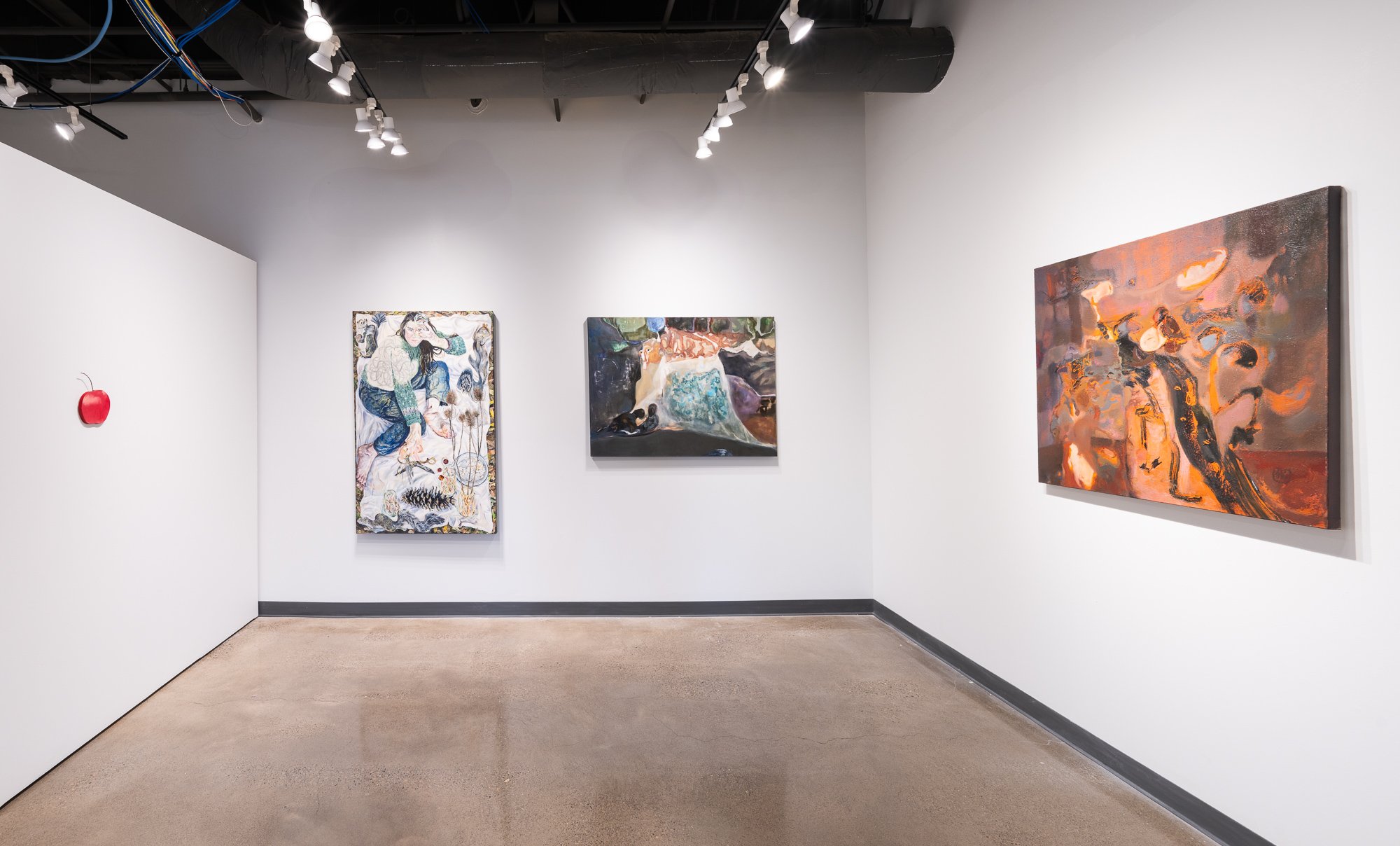
HER FORMATION exhibits the work of nine women artists whose enigmatic artworks offer visions of survival and even imaginative possibility in times of upheaval.
The artists include Marjan Anvari, Kirsten Bauer, Francesca Capone, Sally Jablonsky, Emily Katz, Frankie Krupa-Vahdani, Zhang Mao, Heather Watkins and Amanda Wojick.
Each artist makes sense of the complexity of the world through artistic acts of alteration, abstraction, and material transformation. Their bold, often brightly saturated compositions respond to limitations through a wide variety of approaches, whether limitations of their embodied experience, cultural traditions, or autocratic systems of power. The artists’ works are uncompromising in their creative power, defiant, and even playful.
Drawing on the Gestalt principle of multistability, several works explore how seemingly contradictory patterns fluctuate until our brain makes sense of the image as a whole. We can imagine the classic black and white optical illusion of the face and the vase. Multistability is demonstrated by the see-saw action of the face vs. the vase, and how they eventually resolve into one dynamic image composed of two distinct patterns. The individual pieces come together to create one whole image greater than the sum of its discrete parts. With this, the notion of negative space is refuted and almost laughable – all spaces within the work become positive and the whole composition is active. Thus, the works are not ‘black and white’, rather, are ripe with many nuanced possibilities of meaning and form.
Motherhood is one specific and embodied example that many of the exhibiting artists share, and it may demonstrate this concept of multistability. The existence of two autonomous individuals occupy the same bodily parameters, and are entangled and reliant on each other for survival. Sourced by the symbiotic life-force of the mother and the child, the separation of beings exists nonetheless. The mother and the child become like the face/vase, at once individuals, though simultaneously embodying a dynamic flux of formation.
Several of the artists in this exhibition incorporate their experience of motherhood, or limitations of their embodied experience, inclusive of its celebrations as well as its challenges, into their work. Eugene-based artist Amanda Wojick presents highly saturated, colorful works from her cut-out series from 2017, utilizing wood, mulberry paper, and paint. In these works, tensions between oppositional forces lurk in the small openings of her cut-outs. Her massive, tri-folding partition, “Large Cutout, Pink and Orange” boldly occupies space, asserting playfulness with great force and determination. Instead of mere negative spaces, these cut-out openings possess friction between the process of revision and final form. This work was directly inspired by similar cutouts from her two young children. Her works operate like open-ended puzzles that endlessly integrate the surrounding environment within the composition of the work. As the artist states herself, “The opposing pink and orange sides are linked together by irregularly shaped tabs of painted color, passing through the openings, to reach the other side. Simultaneously commemorative and celebratory, the cutouts dance between painting and sculpture, the imaginary and real, and abstraction and the everyday.”
-
Frankie Krupa-Vahdani’s works offer a similar grandeur to Wojick’s, as her bold tapestry, “Big Blue Grief”, is composed of a kaleidoscopic array of distinct scraps of bandanas and hand-marbled textiles, comes together in the scale of an area rug. The aesthetics in her creative practice are influenced by multiple aspects of her family history, such as Wycinanki — the Polish craft of paper cutting — and classic Persian motifs.
As a first-generation American and the child of immigrants from Iran and Poland, she grew up making sense of generational trauma and many inherited stories, some from the Holocaust and some from the chaos of pre-Iranian Revolution. She blends both of her family’s visual languages “into her own unique dialect filled with vitality and affection.” Her two small pieces included in the exhibition, “Subfloor + I found a walnut” and “Strawberries belong to themselves” transpose commonplace materials into heavily labored works, each somehow exhibiting an effervescent, almost childlike immediacy.
Artspace is pleased to present Heather Watkins’ site-specific installation marked by swooping ink-soaked cotton cords suspended in a monumental arrangement. Watkins’ work explores the poetics between contradictory forces such as dark/light, recto/verso, constriction/release, and beyond. She is captivated by the changing body, both actual and metaphorical, and speaks about how her personal experience influences her work.
Sixteen years ago I was diagnosed with a brain tumor compressing my optic nerve. The process of treatment, recovery, and ongoing observation has made me acutely aware of the ways in which we feel and know time, and has given me a window into the nature of change and impermanence. This perspective has shaped my work, both conceptually and materially. There are many ways to deal with what we cannot control. My response has been to find a way of working that is attuned to experimentation and materiality.
The individual cords in her arrangement can be traced back to numerous past lifetimes of sculpture-making. This particular artwork is a reverent display of her drive towards reimagination. Her work is perhaps as much material as it is the embodied movement that dictates the installation of material. At the core of her work is the mutable, transcendent essence of things.
Firmly anchored on the floor is Francesca Capone’s massive spiral form with a title that spirals as well, “Scallop / Newly carved out recesses become vessels, in time you collect, and you build up once more”. This sculpture’s form of the spiral expresses the moment at which a clash of opposites has been resolved, or is even transcended. Capone’s artistic ethos involves a loose interpretation of the traditional craft of weaving. Through her disciplined, technical training and well-educated approach to the practice, she challenges weaving to be not only a tedious process but a poetic act. The viewer is thus invited to co-create the narrative world of her work, to think beyond the expectations of the woven form, and further, to contemplate the representation of time and place. Her integration of unlikely, sometimes found materials which might otherwise be waste, in this case, dock lines from a nearby marina, likely along the Columbia River, builds complex meaning within her work. Spirals are one of the most widespread shapes found in the natural world, and offer a vast ocean of symbolic significance and cross-cultural primordial powers invoking concepts of inner consciousness, energy, and rebirth. The spiral itself may too represent dissolution or accumulation, both concepts at play in Capone’s material process. Here, also, the spiral is bound by a mesh-like grid of cotton, polycord, and bookbinders tape, holding the charge of the idiom, “keeping it together”, in times of great fragmentation.
Emily Katz shares with us a new larger-than-life freehand embroidery on tulle conveying a figure composed of many disparate selves. Each fragment of the figure floats above the next, with each layer isolated as if upon a diaphanous cloud yet intrinsically tied to the layers within.
Her work here is an inquiry of self love, motherhood, evolving identity and a reintroduction to the wild and wonderful but often hidden and neglected parts of ourselves after childbirth and big life transitions. Her core questions include,
Who am I now?
How do I best show up in the world?
Can I welcome all of myself?
How do I find contentment in the wildness of the outer world?
Where is my anger welcomed?
Emily is a multi-hyphenate whirlwind of a creative worker, whose artistic practice spans a wide spectrum of disciplines– perhaps reflecting her earlier times in Waldorf schools. She is a searcher and her artwork reflects this impulse to dive into the underground, and to reside in the fertile and transformative darkness within oneself and the shared world. Though she may be best known as a luminary in the world of textile arts and entrepreneurship, she continues to delve into the unknown, evermore curious with each new project.
Sally Jablonsky’s newest painting debuts here, entitled, “The Collectors, or, That Which is Sown is Passed On”, depicting a figure contorted upon a wrinkled sheet on the ground, harvesting seeds from a pine cone in a moment of quiet transformation. The work explores the deep reciprocity between the human and plant experience, situating this relationship within the broader context of agricultural industrialization and its possible effects on care and connection to the land. For Jablonsky, colonialism, industrialism, and capitalism—along with the mind-body split they perpetuate—have disrupted our ability to relate to our own bodies and to the natural world with intimacy and respect.
Central to Jablonsky’s practice is the experience of inhabiting a body on Earth, a theme informed by her perspective as a person who identifies with having a disability. Her paintings often convey transitional states, with figures caught between presence and disassociation, reflecting the fluid boundaries between mind, body, and environment. These moments echo the disorientation of living with pain, sensory overload, or the numbing effects of modern distractions. “I use painting,” Jablonsky explains, “to remake my relationship with pleasure, work, able-ness, and my own mind-body experience.” Through artmaking, seed gathering, and the sharing of knowledge, Jablonsky seeks to heal the fractured connections between bodies, land, and the act of care itself. The work offers a generative, and forward-thinking vision of our times.
Kirsten Bauer’s “Cinnamon Spice” is a glossy, vermillion apple, offered like a riddle that can’t quite be solved. It is a moment of magic, a prompt for pause and puzzlement. The small ripe fruit is ornamented with a humble twig the artist collected, combining the organic with her highly technical craftsmanship of sign painting. The artist stated that this piece was informed by chance operations through a process of pouring and rolling paint in a process that could not be predicted. Bauer is a regional luminary in sign painting and graduated from the only formal sign-painting training program still offered in the United States taught continuously since 1924.
Marjan Anvari’s intricate drawing, “Illumination in the Darkness”, is the results of her years of study and restoration of traditional Persian illuminations or, Tazhib. Tazhib is an ornamental, colorful, and beautifying art form that predates Islam. It typically occupies the margins of a page with a purely decorative function. In an act of defiance, Anvari has rendered her work in black and gold, removing the color commonly associated with Tazhib, and thus proclaiming it as politically charged, relevant, and contemporary.
Anvari was born in Tehran, Iran. Her creative practice is fueled by her ancestors’ bravery and activism, as she shared that she and her family have painfully witnessed in their lifetimes the reversing of women’s rights and increase of censorship due to religious ideologies entangling in the Iranian government. Anvari is very active in the local arts communities, bringing people of all backgrounds together to celebrate the folklore, art and dance of Iran, while educating and reflecting with the larger public about the recent changes within this complex cultural heritage.
Zhang Mao presents multiple never before seen abstract paintings, each born from a spontaneous storm of creative energy that overtakes the artist. Zhang Mao can get completely lost in the world around her, for instance, a tiny detail in her visual field becomes an entire universe unto itself upon her observation. Her attention is not solely focused on rendering an image, but on the transportive process of getting lost in the image-making process. Themes of language, emotion, and day to day life emerge covertly in her dream-like work. Her abstract paintings on raw hemp canvas integrate areas of lush inky gradients as an homage to traditional Chinese paintings. Zhang Mao recently moved to Oregon from Yunnan, China and her work, both as an artist and poet, is deeply influenced by the majority of her life occuring in China, and the generational stories of her mother, grandmothers, and great-grandmothers. References to this influence are nested within her images, with inclusions such as birds, landscapes, and Chinese characters. She is known to hand harvest pigments from unlikely sources, such as scraping rust from old cars, or collecting fine dust from bricks. In this, her work is not exclusive to the parameters of the painting, but includes an expansive practice of interacting with the visual field of daily life, in all its chaotic beauty.
-
Marjan Anvari
With years of experience in the restoration of Persian manuscripts, Marjan Anvari has developed a deep understanding of traditional techniques and the intricate beauty of Tazhib. Working with these ancient artworks sparked her interest in this beautiful art form, leading her to study and reinterpret its delicate patterns.In her own work, Anvari simplifies traditional Tazhib motifs, using solid and bold colors rather than the complex designs of the past. This approach allows her to merge the beauty of Persian art with contemporary sensibilities, creating artwork that is both timeless and relevant. Through her creations, she invites viewers to explore the connections between tradition and modernity, encouraging personal interpretations and reflections on cultural heritage.
See more from the artist: https://www.anvaristudio.com/
Kirsten Bauer
Kirsten Bauer is a multidisciplinary artist and sign-painter based in Portland, OR. With a background in Art History & English, she previously worked for several arts organizations in both educational and curatorial departments. These years of study developed her eye for design, color, understanding of visual forms, and ability to pull from a vast inner library of aesthetic references. Kirsten is a graduate of the Los Angeles Trade-Tech Sign Graphics program, the only formal sign-painting training program still offered in the United States - taught continuously since 1924. These two years of study prioritized letterforms, layout & design, and color. To her, sign painting is the act of beautifying our commercial landscape; a way to organize our world and permeate our everyday lives with handmade acts of artistry. Look for Kirsten’s sign painting work on the ACLO gallery windows during this exhibition!
See more from the artist: https://kirstenbauer.com/ & @kirsten.m.bauer
Francesca Capone
Francesca Capone is a materials designer, visual artist, writer, and educator. Her work is primarily concerned with the creation of materials and a poetic consideration of their meaning. She is interested in how tactile forms simultaneously serve as functional surfaces for daily life and as a mode of communication or symbol within the cultural paradigm.
Her interdisciplinary practice takes the shape of visual art exhibitions, readings/performances, and the book form. Her books Woven Places (Some Other Books, 2018), Text means Tissue (2017), and Weaving Language (information as material 2018, Self Published 2015) focus on textile poetics. They are in the library collections at the MoMA Library and the Watson Library at the Metropolitan Museum of Art. She has exhibited at Whitechapel Gallery in London, LUMA/West- bau in Switzerland, Textile Arts Center in NYC, and 99¢ Plus Gallery in Brooklyn. She has been an artist in residence at the Josef and Anni Albers Foundation and Andrea Zittel's A-Z West. Her academic work includes lectures and workshops at Brown University, Rhode Island School of Design, Reed College, University of Washington, and Alberta College of Art and Design, among others. Represented by Nationale, Portland, US.
See more from the artist: https://www.francescacapone.com/
Sally Jablonsky
Sally Jablonsky is a painter, plays traditional Oldtime fiddle, and teaches music and art. Born and raised on a farm just south of Spokane, Washington, Jablonskys’ life and work are infused with experiences of wilderness and of being small on a vast and powerful planet. Her (art) work is influenced by experiences of nature and of being a body, and plays in the space between. Using the body as a source of information, Jablonsky aims to reveal the human fantasy as well as create a new framework to live within–showing the human experience in the greater context of the natural world. Jablonsky is the President and founding member of the Try Harder Society, holds a BFA from the Pacific Northwest College of Art in Portland, Oregon, and an MFA in Visual Studies from that same school. Sally lives in Spokane where she teaches art at Eastern Washington University, is building a fiddle army, making art, and watching the trees move in the wind.
See more from the artist: https://sallyjablonsky.wixsite.com/sallysworld & @the.try.harder.society
Emily Katz
Emily Katz is a multi disciplinary artist, author, and creative entrepreneur, from Portland, Oregon. She has taught macrame, is a designer of clothing and home goods, creative consultant, food lover, creative director, and musician. Emily’s work has been featured in Forbes, The LA Times, London Daily Mail, Buzzfeed, Nylon Magazine, Ku:nel, Popeye Magazine, and Elle Japan, Elle NL, and Elle France, to name a few.
“If I am not for myself, then who will be for me? And if I am only for myself, then what am I? And if not now, when?”
Hillel the Elder (c. 60 BC-10 AD)
See more from the artist: @emilykatz
Frankie Krupa-Vahdani
Frankie Krupa Vahdani (b. 1991, she/her) is a multidisciplinary artist living and working in Skagit Valley, WA. Krupa Vahdani graduated from Western Washington University with a BA in Studio Art. Krupa Vahdani has been a resident at Centrum in Port Townsend, WA and has exhibited work at The Warehouse Museum in Milwaukee, WI, Geheim Gallery in Bellingham, WA, and Fuller Rosen Gallery in Portland, OR and Philadelphia, PA.
See more from the artist: https://www.fkv-art.com/ & @frankieweirdlastname
Zhang Mao
Zhang Mao is a self-taught artist and poet from China. She started creating in 2012. During the 2020 pandemic, she left her home with only a single bag, marking the start of a new chapter in the United States and a significant change in her life and artistic career. Zhang Mao's work is deeply influenced by the generational stories of her mother, grandmothers, and great-grandmothers. This rich tapestry of personal history is reflected in both her poetry and visual art, exploring themes of identity, community, and emotional complexity. In 2019 she published a book of poems entitled “The Wild Mint”, which has influenced many of her paintings. Her artistic style blends spontaneous creativity with refined technique, resulting in evocative abstract forms with rich textures. Zhang Mao has balanced various roles throughout her life, including caregiving and professional responsibilities, while continually developing her artistic practice. Her paintings, which serve as visual extensions of her poems, have been showcased in various exhibitions. Her studio is now based in Portland, Oregon, where she continues to explore themes of language, emotion, and scenes of daily life in abstracted form, inviting viewers to join her on a journey of self-discovery and connection.
See more from the artist: @mao.zhang.161446
Heather Watkins
Heather Watkins’ work explores the nature and possibilities of the drawn line – materially and symbolically. Working with ink, cord, thread, cloth, and paper, she submits these materials to many cycles of saturation, compression, intertwining, and transference. Through these physical processes, she investigates phenomena such as flow, stasis, circulation, and gravity. Her work takes many forms: sculpture, drawing, text-based work, printmaking, and artist’s books.
Her work has been shown in numerous exhibitions, at venues including: PDX CONTEMPORARY ART, Portland, OR; Portland Art Museum, Portland, OR; Planthouse Gallery, New York, NY; the lumber room, Portland, OR; Front of House, Portland, OR; The Art Gym, Marylhurst, OR; and Nine Gallery, Portland, OR. Her work is held in private and public collections including the Portland Art Museum, the Miller Meigs Collection, the Regional Arts and Culture Council’s Portable Works Collection, the Collection of Jordan D. Schnitzer, Portland State University, Reed College, and Rhode Island School of Design Artist’s Book Collection. She has been the recipient of grants from Oregon Arts Commission, The Ford Family Foundation, and Regional Arts & Culture Council, and has been awarded residencies at Caldera; Sitka Center for Art & Ecology; Oregon College of Art and Craft; and at Em Space Book Arts Center. Watkins holds an MFA from the Rhode Island School of Design, and is represented by PDX CONTEMPORARY ART.
See more from the artist: https://heatherwatkinsstudio.com/ & @heatherwatkinsstudio
Amanda WojickAmanda Wojick’s visual art often combines sculpture, collage, and painting. Using ordinary materials such as paper, glue, wood and tape, Wojick creates brightly colored dimensional fields of irregular lines, circles, and rectangles. She is interested in the friction between public and private space, as well as the politics and potentials of materiality. Her projects have engaged subjects including landscape, routine, history, and the cultural space of the home. Wojick is the recipient of national fellowships and awards from the Macdowell, Yaddo,, Mass MoCA, the Ucross Foundation, the Portland Art Museum, the Oregon Arts Commission and Ford Family Foundation, the Ragdale Foundation, and Sculpture Space. Her work is in public and private collections including the Portland Art Museum and the Tacoma Art Museum, and she is represented by the Elizabeth Leach Gallery. Wojick is a Professor and co-chair of the Sculpture program at the University of Oregon. She lives in Eugene with her husband and two sons.
See more from the artist: https://www.amandawojick.com/ & @amandawojick
Exhibition Catalog (PDF)
Includes the full essay along with more information on the individual artworks. If you are interested in learning more about a particular artist or considering purchasing an artwork, this is a great resource.
Events include:
Friday, 2/21/25, 5-7pm: Opening Reception at Artspace. Free & Open to the public.
Friday, 2/28/25, 12pm-4pm: Meet the artist & Live Sign Painting Demo by artist Kirsten Bauer, within Artspace. Free & Open to the public.
Friday, 3/14/25, 5pm-7pm: Artists Sharing Influences: Short talks from a selection of the exhibiting artists about one of their inspirations, within Artspace. Free & Open to the public.
Saturday, 4/19/25, 12pm-4pm: Sign Painting Workshop with Kirsten Bauer, within Artspace.
Artspace is open Tuesday–Friday from 10 a.m. to 5 p.m. and by appointment. If you’re interested in more information on the exhibition, please reach out to us at artscouncillo@gmail.com.
